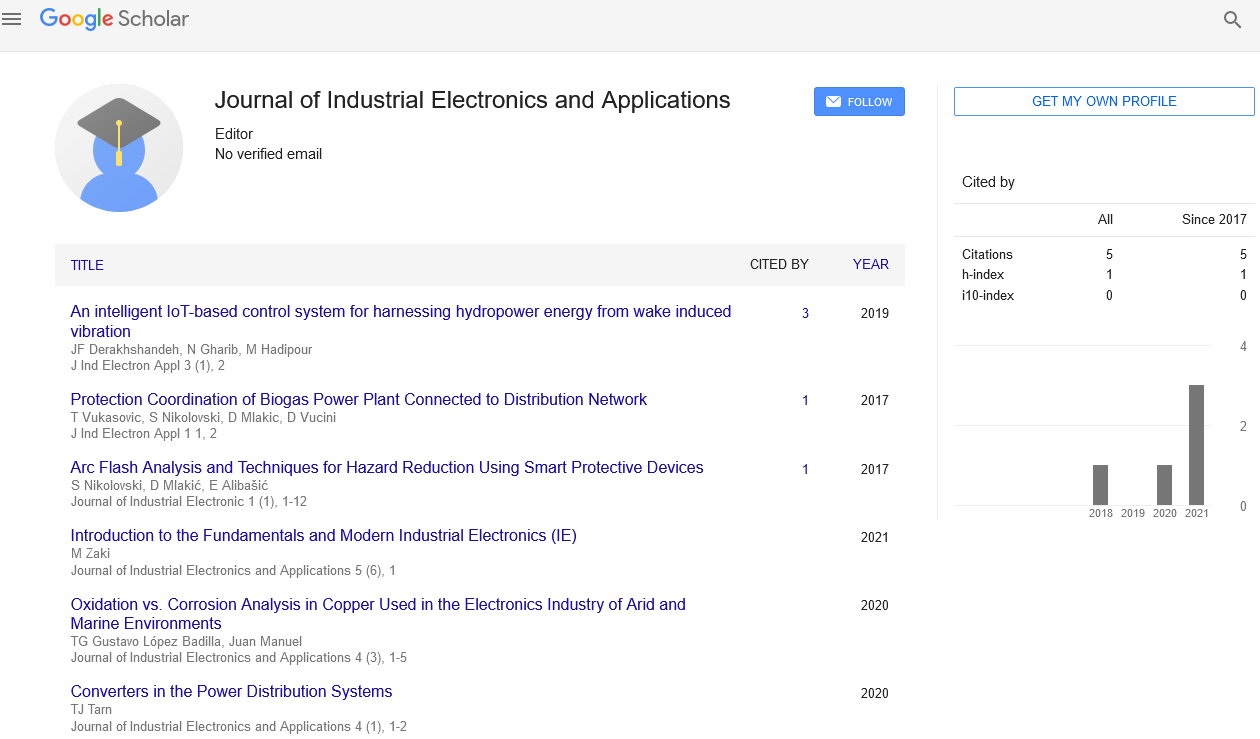Perspective, J Ind Electron Appl Vol: 7 Issue: 1
Safety features in Automotive Technology: Shaping the Future of Transportation
Jinsong Xia Lui*
1Department of Mining, Queen’s University, 25 Union Street, Kingston, Ontario K7L 3N6, Canada
*Corresponding Author: Jinsong Xia Lui
Department of Mining, Queen’s
University, 25 Union Street, Kingston, Ontario K7L 3N6, Canada
E-mail: Jinsong.xl.@yahoo.com
Received date: 24 February, 2023, Manuscript No. JIEA-23-95931;
Editor assigned date: 28 February, 2023, PreQC No. JIEA-23-95931(PQ);
Reviewed date: 13 March, 2023, QCNo JIEA-23-95931;
Revised date: 21 March, 2023, Manuscript No. JIEA-23-95931(R);
Published date: 30 March, 2023, DOI: 10.4172/JIEA.1000022.
Citation: Lui JX (2023) Safety features in Automotive Technology: Shaping the Future of Transportation. J Ind Electron Appl 7:1.
Description
Automotive technology has come a long way since the invention of the automobile. Over the years, technological advancements have revolutionized the automotive industry, transforming the way we travel and interact with vehicles. From safety features to connectivity, efficiency, and sustainability, automotive technology continues to shape the future of transportation, making vehicles smarter, safer, and more environmentally friendly. In this manuscript, we will explore the latest advancements in automotive technology, discussing their impact on the industry and the potential they hold for the future.
Safety innovations
Safety has always been a top priority in the automotive industry, and advancements in automotive technology have led to significant improvements in vehicle safety. Features such as adaptive cruise control, lane departure warning, blind spot detection, and automatic emergency braking have become increasingly common in modern vehicles, helping to prevent accidents and save lives. Furthermore, the development of Advanced Driver Assistance Systems (ADAS) and autonomous driving technology is expected to further enhance vehicle safety by reducing human error, which is a leading cause of accidents.
Connectivity and infotainment
Connectivity has become an integral part of modern vehicles, allowing for seamless integration with smartphones and other devices. In-car infotainment systems now offer a wide range of features, including voice recognition, real-time traffic updates, GPS navigation, media streaming, and smartphone integration, making driving a more convenient and enjoyable experience. Furthermore, Vehicle-To- Vehicle (V2V) and Vehicle-To-Infrastructure (V2I) communication technologies are being developed to enable communication between vehicles and traffic infrastructure, which can potentially improve traffic flow and reduce accidents.
Electric and hybrid vehicles
As concerns about environmental sustainability and fuel efficiency continue to grow, advancements in electric and hybrid vehicle technology are gaining momentum. Electric Vehicles (EVs) are becoming more mainstream, with longer driving ranges, faster charging times, and improved battery technologies. Additionally, hybrid vehicles, which combine internal combustion engines with electric powertrains, are becoming more efficient and are being offered in a wider range of models. These advancements are driving the shift towards greener transportation, reducing greenhouse gas emissions and promoting a more sustainable future for the automotive industry.
Lightweight materials and aerodynamics
Advancements in material science and aerodynamics are also contributing to the development of more efficient and sustainable vehicles. Lightweight materials such as carbon fiber, aluminum, and composites are being used to reduce the weight of vehicles, improving fuel efficiency and reducing emissions. Additionally, improved aerodynamics, including active aerodynamic features such as adjustable spoilers and flaps, are being utilized to optimize airflow around vehicles, reducing drag and improving fuel economy.
Artificial intelligence and machine learning
Artificial Intelligence (AI) and machine learning are rapidly transforming the automotive industry. AI is being used in various applications, such as autonomous driving, predictive maintenance, and advanced diagnostics. Machine learning algorithms are being employed to analyze large amounts of data generated by sensors in vehicles, enabling predictive maintenance to identify potential issues before they become essential, reducing downtime and improving reliability. Moreover, AI is also being used in the development of selfdriving cars, enabling vehicles to perceive their surroundings, make decisions, and navigate autonomously.
Advancements in automotive technology are shaping the future of transportation in numerous ways, from improving safety and connectivity to promoting sustainability and efficiency. With innovations such as safety features, connectivity and infotainment, electric and hybrid vehicles, lightweight materials and aerodynamics, and artificial intelligence and machine learning, the automotive industry is undergoing a rapid transformation. These advancements have the potential to revolutionize the way we travel and interact with vehicles, making transportation safer, smarter, and more sustainable. As technology continues to evolve, the future of automotive technology looks promising, with exciting opportunities.
 Spanish
Spanish  Chinese
Chinese  Russian
Russian  German
German  French
French  Japanese
Japanese  Portuguese
Portuguese  Hindi
Hindi 